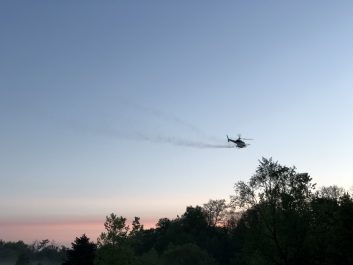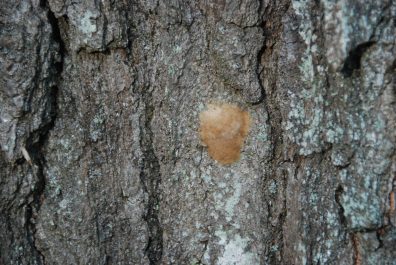Mississauga Considering Aerial Spray Program in Spring 2022
Environment | November 29, 2021
Today during Budget Committee, Forestry staff presented a corporate report recommending that the City of Mississauga consider an Aerial Spray Program in spring 2022 to help manage the Lymantria dispar dispar (LDD) moth (formerly known as gypsy moth) population. A budget of $3 million is being recommended as part of a wider pest management program to target LDD moths in affected areas of the city and protect Mississauga’s tree canopy.
LDD is a non-native and invasive pest that destroys trees by eating away at the leaves, which weakens trees and can lead to disease. In 2018, the City completed a similar Aerial Spray Program which helped slow the LDD population for approximately two years. However, the outbreak in Mississauga continues and within the last year, LDD populations have risen in many areas of the city as well as across southern Ontario.
“Protecting Mississauga’s tree canopy and the environment is more important than ever. Trees play such a critical role in helping fight climate change, especially in urban areas like Mississauga,” said Jodi Robillos, Commissioner, Community Services. “We need to ensure our trees, forests and greenspaces remain healthy today and into the future. An Aerial Spray Program will target public and privately-owned trees so that our neighbourhoods can continue to remain green and vibrant.”
Earlier this fall, the City hired consultants Lallemand Inc./BioForest – experts in data gathering analysis and providing operational guidance on aerial spray programs. As consultants, they monitored and surveyed LDD egg masses at 50 parks and 75 other areas across the city. Egg mass surveys help determine which areas of the city have higher LDD populations and are at risk of severe tree defoliation.
“This year, Mississauga experienced high population levels of LDD and Forestry staff worked quickly to identify areas of the city at greatest risk. The data we received helped us predict how much defoliation can occur in 2022 when LDD caterpillars emerge in the spring,” said Stefan Szczepanski, Acting Director, Parks, Forestry and Environment. “The results showed that 64 per cent of surveyed parks will have severe defoliation due to a large and healthy LDD population.”
This past spring, the City also treated 396 public trees in select parks and streets with TreeAzin injections and ground sprays of Bacillus thuringiensis subspecies kurstaki (BTK) to help control the LDD population.
Szczepanski added, “LDD has been around Mississauga for many years. We cannot completely remove them, but we can take steps to reduce their population. The recommendation to conduct an aerial spray treatment will allow the City to cover larger targeted areas, including private property.”
The aerial spray treatment will continue to use BTK – a bacterium that occurs naturally in soils and is produced specifically for pesticide use. According to Health Canada, there have been no identified public health problems or significant environmental concerns after years of widespread BTK use in forestry, agriculture and urban settings. BTK is only toxic in the caterpillar stage of the LDD life cycle and does not affect adult moths and butterflies, or other insects and wildlife.
The report for a recommended Aerial Spray Program in 2022 will go to Council on December 8, 2021 for final approval.
For more information about the recommendation, including identified neighbourhoods and parks where aerial spray treatment would occur, read the corporate report.

BACKGROUND
Information for homeowners
As the City has now completed its egg mass survey, residents can help control the Lymantria dispar dispar population and protect their own trees by searching their property for any egg masses and removing them. Egg masses can be found not just on trees, but also windowsills, under eaves, around bird houses, on patio furniture and on fences or mail boxes. Egg mass removal can be done now until the end of April.
For more information on how to identify and remove egg masses, click here.
Watch the video on how to identify and remove an egg mass: youtu.be/zLL3SQmv2sM
Residents can also report sightings of Lymantria dispar dispar in their neighbourhood using an online reporting form.

About Lymantria dispar dispar
Lymantria dispar dispar – formerly known as gypsy moth – has been established in Ontario for more than 30 years. The species is native to Europe and was introduced to North America. Lymantria dispar dispar caterpillars eat leaves from trees during the spring and early summer. They strip the leaves until early summer when they enter their moth stage. They prefer oak trees but will eat the leaves of any hardwood tree such as ash, birch or elm.
Healthy trees can grow their leaves back in the same season, but an ongoing Lymantria dispar dispar infestation weakens trees and can make them more likely to be damaged by other insects and diseases.
Tags
Media Contact:
City of Mississauga Media Relations
media@mississauga.ca
905-615-3200, ext. 5232
TTY: 905-896-5151